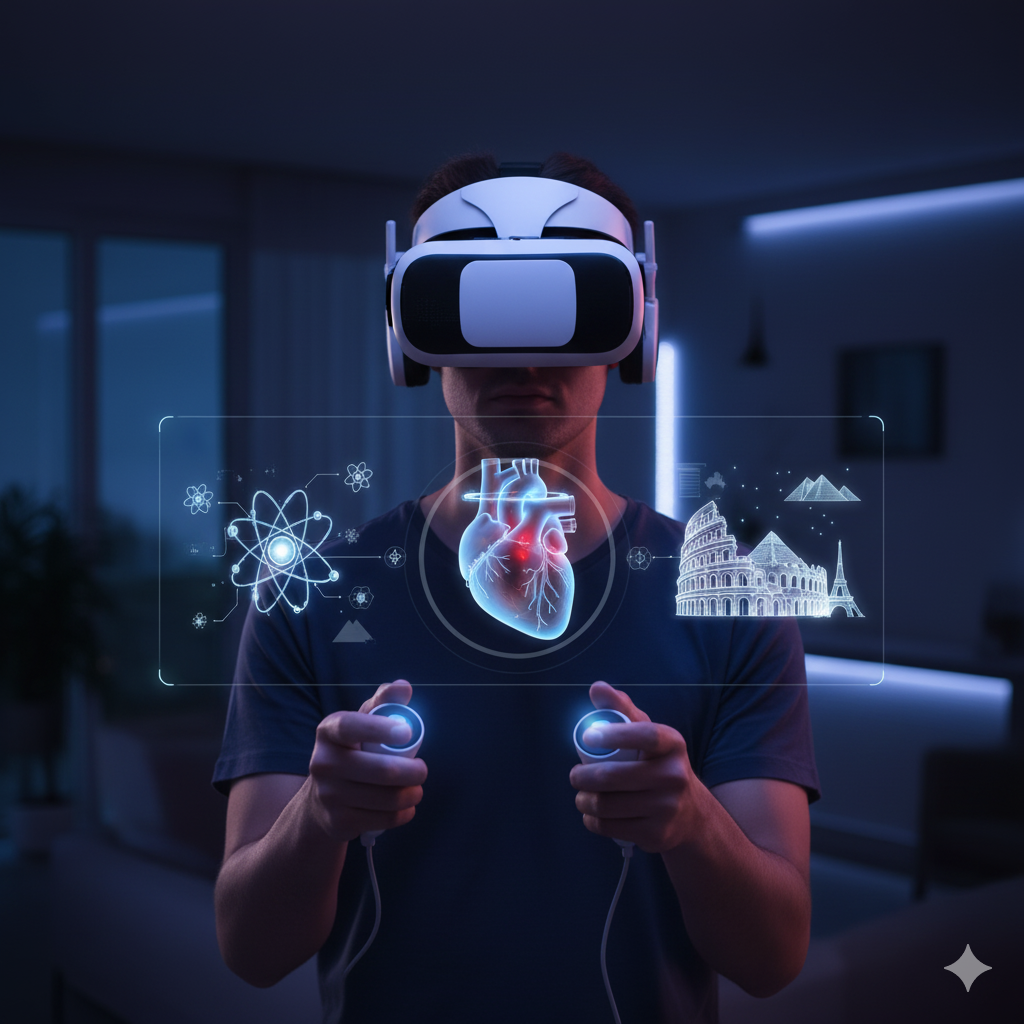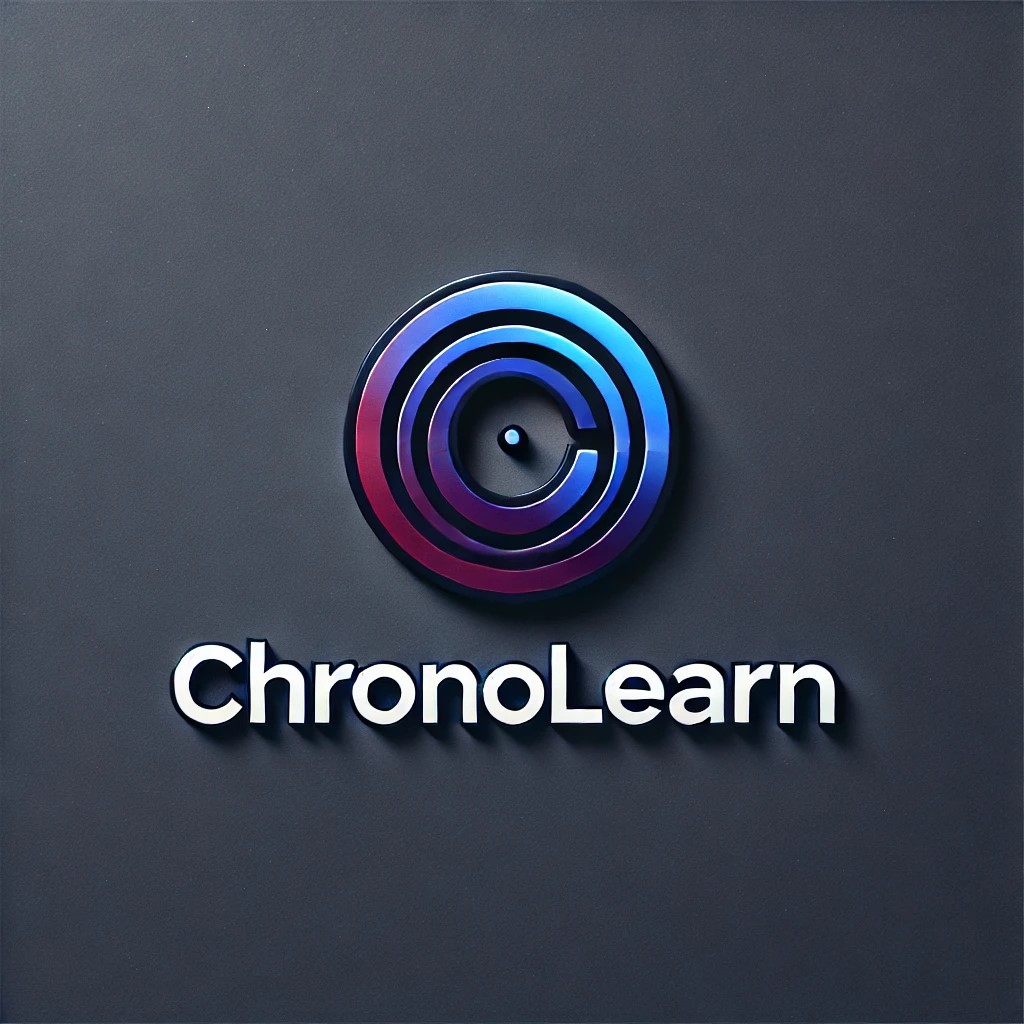
Metaverse, AR/VR & Immersive Learning: Is This the Future of E-Learning?
Remember when "online learning" meant clicking through a slideshow and taking a multiple-choice quiz? For years, e-learning has been a game of convenience, offering flexibility but often lacking the engagement and effectiveness of a real classroom.
But what if you could don a headset and stand inside the Roman Colosseum as gladiators prepare for battle? What if a medical student could practice a complex surgery on a holographic heart, or a mechanic could disassemble a jet engine without touching a single physical tool?
This isn't science fiction. This is the new frontier of education, powered by the convergence of the Metaverse, Augmented Reality (AR), and Virtual Reality (VR). At ChronoLearn, we believe this isn't just an upgrade—it's a fundamental shift. Let's dive into why Immersive Learning is poised to redefine the future of e-learning.
What Exactly is Immersive Learning?Immersive learning is an experiential training methodology that uses technology to create simulated, digitally-enhanced environments for learning. Learners don't just see information; they experience it. The primary technologies driving this are:
-
Virtual Reality (VR): Fully immersive, computer-generated simulations that replace your real-world environment. (Think: Oculus Quest, HTC Vive).
-
Augmented Reality (AR): Digital elements overlaid onto the real world through a smartphone or glasses. (Think: Pokémon GO or IKEA's furniture placement app).
-
The Metaverse: A persistent, shared, and interconnected virtual universe where users, represented by avatars, can interact with each other and digital objects. It's the ultimate platform for social, collaborative immersive learning.
The benefits move far beyond the "cool factor." Immersive technologies tap into the core of how humans learn best: through experience and emotion.
1. Unmatched Engagement and RetentionLet's be honest: it's hard to get distracted by your phone when you're virtually walking on Mars. VR and AR create a level of engagement that videos and text simply can't match. This "learn by doing" approach, known as experiential learning, has been shown to significantly improve knowledge retention. A study by PwC found that VR learners were up to 4 times more focused than their e-learning peers and 1.5 times more focused than classroom learners.
2. Safe, Risk-Free Practice EnvironmentsMistakes are a crucial part of learning, but in some fields, they can be costly or dangerous. Immersive learning creates a perfect sandbox. A rookie welder can practice without fire risk, a pilot can navigate a thunderstorm, and a public speaker can address a virtual audience of thousands to conquer their fear. This safe-to-fail environment builds competence and confidence.
3. Mastering Complex Skills with Hands-On ExperienceSome concepts are just hard to grasp from a textbook. Imagine learning human anatomy by exploring a life-sized, beating heart in VR. Or understanding astrophysics by manipulating a virtual solar system. AR can bring complex diagrams to life right on a student's desk, making abstract concepts tangible and easier to understand. For a deeper dive into modern learning methodologies, check out our blog on [Blended Learning: Combining the Best of Traditional and Digital Education].
4. Bridging the Physical Distance GapThe Metaverse shatters geographical barriers. A student in Tokyo can collaborate on a virtual science project with a student in Toronto as if they were in the same lab. This fosters global collaboration, cultural exchange, and a new form of social learning that is both powerful and inclusive.
Real-World Applications: It's Already HappeningThis isn't theoretical. Industries are already leveraging immersive learning with incredible results:
-
Corporate Training: Walmart uses VR to train employees for Black Friday, simulating crowded stores and difficult customer interactions.
-
Healthcare: Companies like Osso VR provide a platform for surgeons to practice procedures, leading to improved surgical performance.
-
Higher Education: Universities like Stanford and MIT have virtual labs where students can conduct chemistry experiments that would be too expensive or hazardous in the real world.
-
Soft Skills: Companies like Mursion use VR to train employees in leadership, empathy, and communication through simulations with AI-powered human avatars.
Of course, the path to widespread adoption isn't without its bumps. Challenges like the cost of hardware, potential for motion sickness, and the need for high-quality content creation remain. However, as technology advances and becomes more affordable, these barriers are quickly falling.
At ChronoLearn, our vision is to stay at the forefront of these developments. We are exploring how to integrate micro-immersive experiences into our learning pathways—using AR for quick job-aids or VR for complex scenario-based assessments. We believe the future is a blended learning ecosystem, where traditional content, social learning, and immersive experiences coexist to create the most effective and engaging educational journey possible.
The question is no longer if immersive learning will become mainstream, but when. The potential to create deeper understanding, foster empathy, and build true mastery is simply too great to ignore.
Ready to future-proof your learning strategy? The first step is understanding the foundational principles of effective digital education. Explore our guide on [5 Key Principles for Designing Modern E-Learning Courses] to build a solid base for the immersive future.
What do you think? Are you ready to step into the virtual classroom? Share your thoughts on immersive learning in the comments below!
Tags :
- Immersive Learning
- Future of E-Learning
- Metaverse Education
- AR in Learning
- VR in Education
- EdTech Trends
- E-Learning Future
- Virtual Reality Learning
- Benefits of Immersive Learning
- AR VR in Corporate Training
- Metaverse for Education
- Virtual Classroom
- Experiential Learning
- Gamification in Education
- Interactive Learning
- Technology in Education
- Digital Learning Solutions
- Engaging E-Learning
- Improve Learning Retention
- Safe Training Environment
- Hands-On Learning
- Corporate Training Solutions
- Skill Development
- Higher Education Innovation
- ChronoLearn






